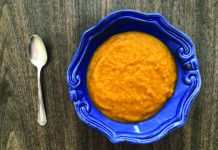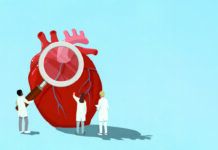A. The 2010 Dietary Guidelines for Americans made this distinction: “Seafood is a large category of marine animals that live in the sea and in freshwater lakes and rivers. Seafood includes fish, such as salmon, tuna, trout, and tilapia, and shellfish, such as shrimp, crab, and oysters.” In terms of nutrition, seafood of all kinds can be a healthy alternative to protein sources higher in calories and saturated fat, provided the fish or shellfish is prepared in a way (such as broiled, baked or grilled) that doesn’t add calories or saturated fat.
But the primary reason behind the Guidelines’ advice to eat more seafood is to increase intake of the omega-3 fatty acids EPA and DHA, which are associated with protection against cardiovascular disease. The Guidelines noted, “Seafood varieties commonly consumed in the United States that are higher in EPA and DHA and lower in mercury include salmon, anchovies, herring, sardines, Pacific oysters, trout, and Atlantic and Pacific mackerel (not king mackerel, which is high in mercury).”
Your favorite seafood choices don’t make that list, unfortunately. “Shrimp is a lean source of high-quality protein. However, because it is low in total fat it is also low in omega-3 fatty acids,” says Alice H. Lichtenstein, DSc, director of Tufts’ HNRCA Cardiovascular Nutrition Laboratory. (See our August 2013 feature on shrimp for more.) The omega-3 content of crab is somewhat higher, similar to that of light canned tuna, although it varies widely by species. A three-ounce serving of Alaskan king crab, for example, contains about 250 milligrams of EPA and 100 milligrams of DHA, the two most important omega-3s; compare that to 586 milligrams of EPA and 1,238 milligrams of DHA in the same amount of farmed salmon.



















